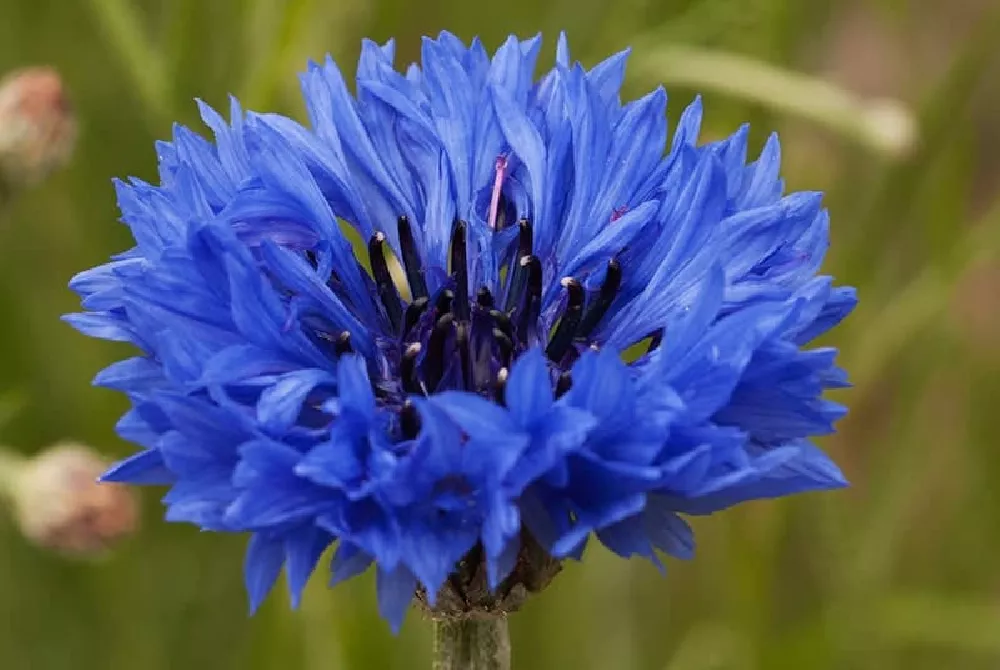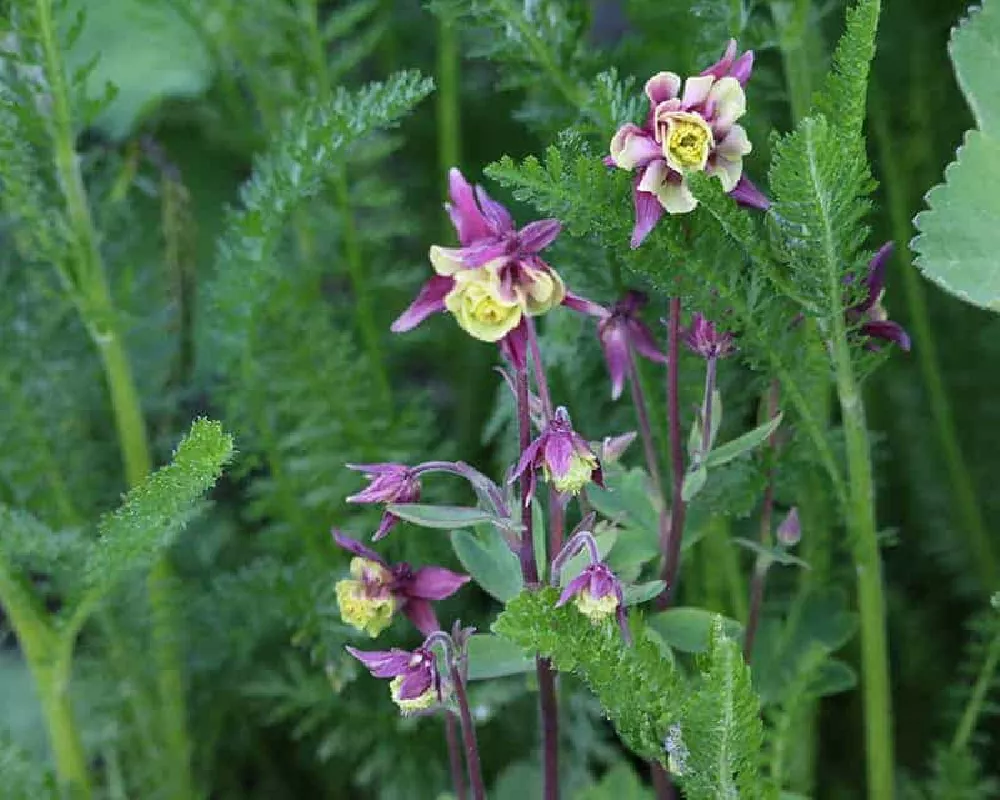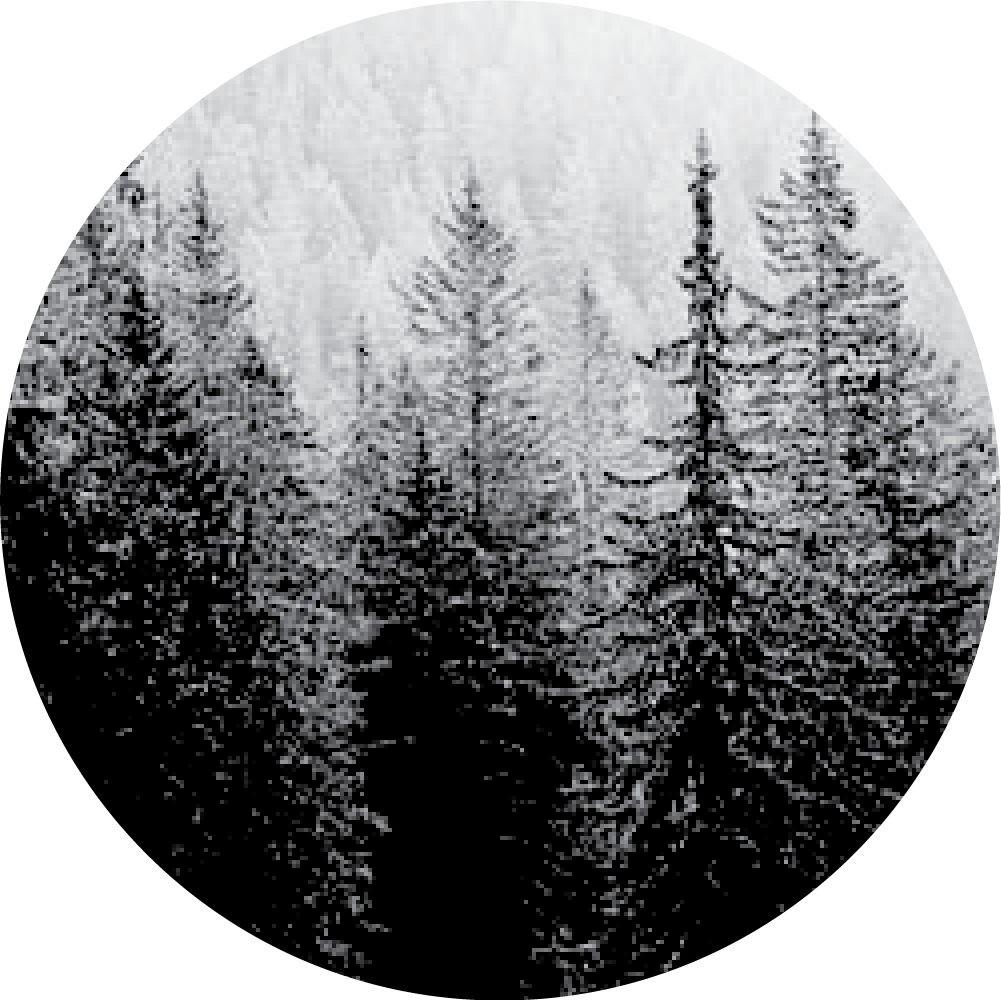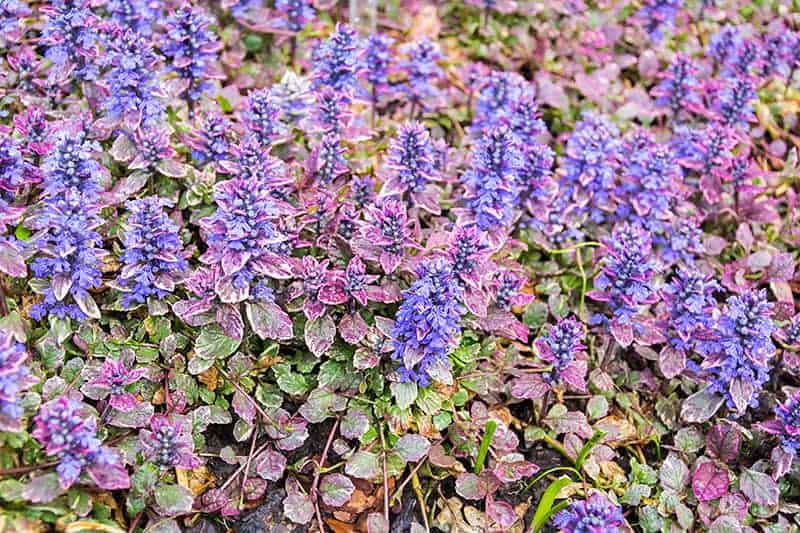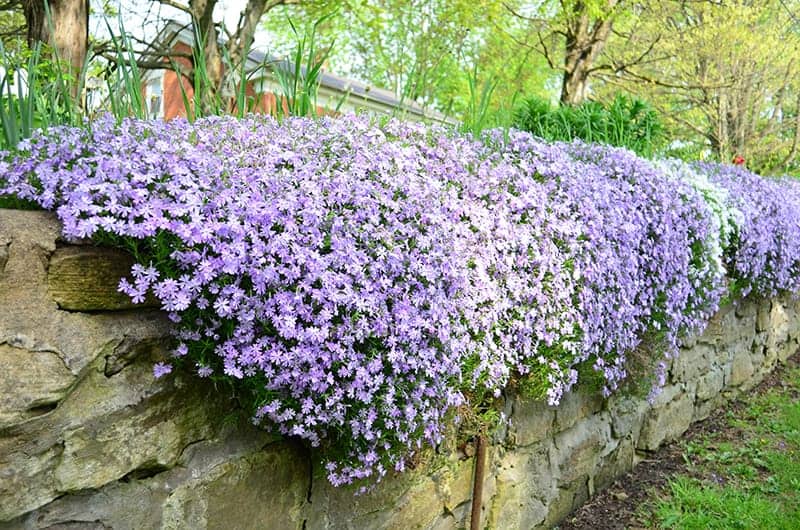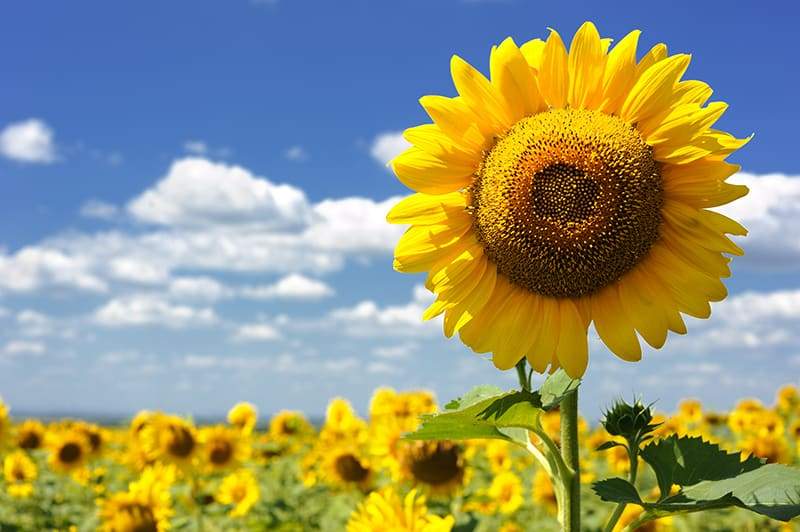Trees and Plants with Blue Flowers for Sale - Buying & Growing Guide
Filters
Price Range
Growing Zones
Sunlight
Mature Height
Plant Characteristics
3 Results
Trees and Plants with Blue Flowers – Buying & Growing Guide
Blue flowers are not considered exceptionally rare, but they are certainly one of the least commonly found flower colors in gardens, with blue flowers accounting for just ten percent of all flowering plants known in the world.
20 Types of Blue Flowers
1. Blue Star
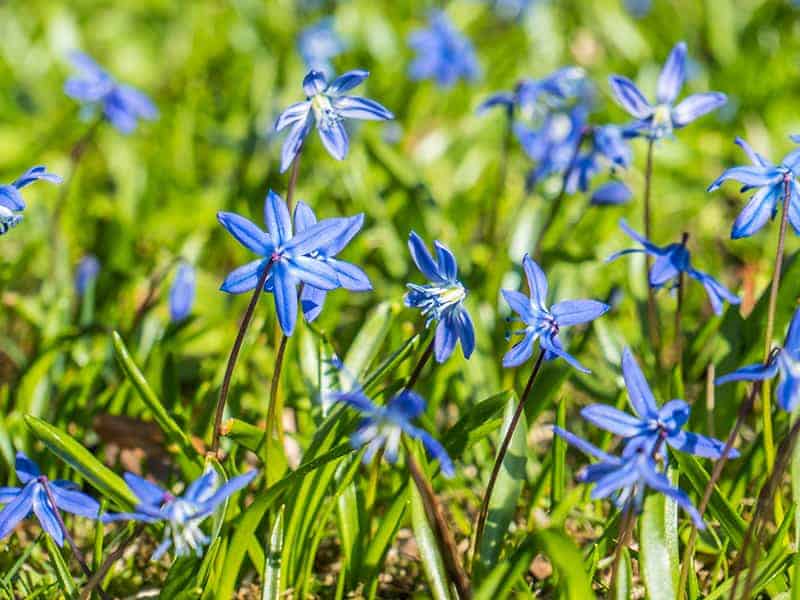
Origin: North America
Name: Amsonia sp.
Family: Apocynaceae
Type: Perennial flowering shrub
Mature Size: 2-3 feet tall, and 2-3 feet wide
Hardiness Zone: USDA growing zones 5- 11
Light: Full sun to partial shade
Water: Keep moist, drought-tolerant once mature
Soil: Well-draining
Flower Color: Pale to medium blue
Special Features: Awarded the 2011 Perennial Plant of the Year
These pretty blue flowers grow in clusters, with star-shaped blooms that have a soft and delicate appeal. The green leaves are lance-shaped with a resemblance to willow leaves, which transform into gold in the fall. The flowers bloom for several weeks in the summer before turning to seed pods. They are native to North America and grow easily without many problems, offering a beautiful, low-maintenance blue flowering plant for warm climates. They will bloom best in full sun but can handle partial shade as well.
2. Bachelor’s Buttons

Origin: Europe
Name: Centaurea cyanus
Family: Asteraceae
Type: Annual wildflower
Mature Size: 1- 3 feet tall
Hardiness Zone: USDA growing zones 2- 11
Light: Full sun
Water: Medium moisture
Soil: Well-draining
Flower Color: Vivid bright blue
Special Features: Self sows easily
This pretty wildflower got its name because bachelors wore the flower on their lapel when they were courting. Some may also know this plant as the Cornflower because it grew in abundance among cornfields in Europe. It is now widely cultivated in home gardens thanks to its striking beauty, its low-maintenance, and its ability to survive in a wide range of climates. Bachelor’s buttons produce bright blue flowers that reach up to face the sun. The blooms themselves are a cross between daisies and thistle flowers. They self-seed easily, giving you plenty of new flowers each year.
3. Himalayan Blue Poppy

Origin: Tibet
Name: Meconopsis betonicifolia
Family: Papaveraceae
Type: Perennial
Mature Size: 4 feet tall
Hardiness Zone: USDA growing zones 3- 9
Light: Partial shade
Water: Maintain moist soil
Soil: Rich, well-draining
Flower Color: Medium to light blue
Special Features: Uncommon, due to its difficulty level
If you have green fingers and like a challenge, then this is the flower for you. It can be tricky to grow, seeing as it is native to the mountains of Tibet and is accustomed to quite specific growing conditions. It likes to have consistently moist soil, shelter, and shade. It can be grown from seed, and if you achieve success, you will be rewarded with a striking large dainty looking blue flower, which, as you would expect from the name, greatly resembles a poppy. The foliage of the plant is quite different from that of a poppy, though, offering glossy green leaves (Royal Horticultural Society).
4. African Blue Lily

Origin: South Africa
Name: Agapanthus africanus
Family: Amaryllidaceae
Type: Perennial
Mature Size: 2 feet tall
Hardiness Zone: USDA growing zones 8- 11
Light: Full sun to partial shade
Water: Medium moisture
Soil: Rich, well-draining
Flower Color: Dark blue through to white
Special Features: Long blooming period
These trumpet style flowers grow in large clusters, varying in colorful shades of blue and white. They have a long blooming period, which makes them popular with gardeners, flowering from July through to September. Their main drawback is that they are quite tender and therefore are only suitable for growing in warm climates.
5. False Indigo

Origin: North America
Name: Baptisia australis
Family: Fabaceae
Type: Herbaceous perennial
Mature Size: 4 feet tall
Hardiness Zone: USDA growing zones 3 to 9
Light: Full sun to partial shade
Water: Dry to medium
Soil: Well-draining
Flower Color: Purple blue
Special Features: Used in making dye
This plant features upright branching stems from which plentiful violet-blue dainty flowers grow. It can be difficult to establish, but once strong roots have taken hold, it will become drought-tolerant. False Indigo does not like to be disturbed, so plant it in a spot where it can live out its life. Large clumps can be divided for propagation, though the plant can react badly to this.
6. Gentians

Origin: Asia, Europe, Americas
Name: Gentiana sp.
Family: Gentianaceae
Type: Flowering plant
Mature Size: 3 inches tall
Hardiness Zone: USDA growing zones 4 to 8
Light: Full sun to partial shade
Water: Maintain moist soil
Soil: Rich, fertile soil
Flower Color: Vibrant medium blue
Special Features: Gentian root is used in making some drinks
These tubular flowers come in several shades, but predominantly they are blue. They typically prefer cool and wet conditions and are native to woodland areas, thriving well in rock gardens. The large, showy flowers have won the plant the prestigious Award of Garden Merit from the Royal Horticultural Society. Flowers typically bloom in fall to provide color and interest throughout the cooler months (BBC).
7. Lungwort

Origin: Europe
Name: Pulmonaria officinalis
Family: Boraginaceae
Type: Evergreen perennial
Mature Size: 12 inches tall
Hardiness Zone: USDA growing zones 2 to 8
Light: Shade
Water: Medium moisture
Soil: Rich, fertile soil
Flower Color: Pale to medium blue
Special Features: Shade-loving plant
This unusual plant blooms early, often hailing the start of spring. The flowers initially appear red or pink but develop to blue as they open up. The stems and leaves of the plant have tiny hairs and can be green or variegated with white spots. As shade-loving plants, these are brilliant for bringing color to darker corners of your garden where many flowers would not typically grow.
8. Corydalis China Blue

Origin: China
Name: Corydalis flexuosa
Family: Papaveraceae
Type: Perennial
Mature Size: 12 inches tall
Hardiness Zone: USDA growing zones 4 to 8
Light: Partial shade
Water: Medium moisture
Soil: Well-draining
Flower Color: Vibrant mid blue
Special Features: Early bloomer
This plant has a low-growing spreading habit that makes it ideal for use as groundcover or for filling in gaps in your garden. From early spring through to the middle of summer, it produces dainty tubular flowers in vivid shades of blue. It grows well under trees or alongside large shrubs where it can benefit from dappled shade (Gardeners World).
9. Periwinkle/ Creeping Myrtle

Origin: Europe
Name: Vinca minor
Family: Apocynaceae
Type: Evergreen
Mature Size: 4 inches tall
Hardiness Zone: USDA growing zones 4 to 8
Light: Partial shade
Water: Medium to low moisture
Soil: Well-draining
Flower Color: Pale blue
Special Features: Effective flowering groundcover
This plant has a rapid spreading habit, which makes it ideal for use as groundcover. This feature also makes it suitable for use as erosion control, a job which it fulfills very successfully in various areas across the US. The name periwinkle comes from the shade of periwinkle blue flowers that bloom on the plant in April and May. Once established, the plant is drought-tolerant and requires little in the way of care, though you will need to keep an eye on it to prevent it from taking over your garden.
10. Larkspur

Origin: Northern Hemisphere
Name: Delphinium
Family: Ranunculaceae
Type: Perennial or annual flowering plant
Mature Size: 6 feet tall
Hardiness Zone: USDA growing zones 3- 7
Light: Full sun to partial shade
Water: Medium moisture
Soil: Well-draining, fertile soil
Flower Color: Blue, pink, white, purple
Special Features: Make good cut flower arrangements
These showy plants, often known simply by their scientific name of Delphinium, grow in tall spikes from which summer flowers bloom in shades of pink, white, purple, and blue. They can be quite difficult to grow as they are sensitive to very hot summers, as well as adverse weather such as rain or strong winds. They prefer mild, cool summers, and thrive in moist conditions. Plant them alongside a fence or wall to help shelter them from wind and rain and stake them to prevent them from drooping over.
These flowers are popular in cut flower bouquets, and if you cut them early enough in the season, then you should find they will bloom again before the year is out. All parts of the plant are poisonous to both humans and animals and should be handled with caution (The Old Farmers Almanac).
11. Georgia Blue/ Speedwell

Origin: North America
Name: Veronica umbrosa
Family: Plantaginaceae
Type: Semi-evergreen perennial
Mature Size: 4 inches tall
Hardiness Zone: USDA growing zones 4 to 8
Light: Full sun to partial shade
Water: Maintain moist soil
Soil: Well-draining
Flower Color: Medium blue
Special Features: Vigorous growth
This low-growing plant grows vigorously to a maximum height of just 4 inches, making it ideal for use as groundcover in an area you want to cover fairly quickly. The rooting stems are dotted with tiny blue flowers that have pretty, open faces, and they bloom for a long time throughout both spring and summer. Once the plant has covered enough ground, you can propagate it easily by division. It thrives in full sun but will also tolerate partial shade. It is attractive to butterflies and other pollinators, bringing a host of wildlife into the garden.
12. Black and Blue Sage

Origin: South America
Name: Salvia guaranitica
Family: Lamiaceae
Type: Perennial subshrub
Mature Size: Up to 5 feet tall
Hardiness Zone: USDA growing zones 7 to 10
Light: Full sun to partial shade
Water: Medium moisture
Soil: Well-draining
Flower Color: Vivid mid blue
Special Features: Unique contrasting black stems against blue flowers
This plant can be grown as a perennial in warmer climates or as an annual in zones lower than zone 7. It has a striking appearance, with dark green-black stems from which vibrant blue flowers grow. It is also commonly known as ‘Blue Anise Scented Sage’ because when crushed, the leaves emit an aroma resembling that of anise.
This plant is popular among gardeners because it grows easily, to the point that it has become invasive in some areas, so keep a close eye on it in your garden. The stunning flowers are the showstopper of this plant, blooming all through summer until the first frost.
13. Siberian Squill

Origin: Russia
Name: Scilla siberica
Family: Asparagaceae
Type: Flowering perennial plant
Mature Size: Up to 8 inches tall
Hardiness Zone: USDA growing zones 2 to 8
Light: Full sun to partial shade
Water: Medium moisture
Soil: Well-draining
Flower Color: Deep medium blue
Special Features: Self-seeding
In spite of its name, this plant does not hail from Siberia, instead originating in Russia, though it has become naturalized in the US. It grows pretty nodding bluebell-like flowers on upright stems, blooming early on in the spring. It spreads rapidly from seed, leading to it becoming invasive in some areas in the US. To prevent the plant from self-seeding in your garden, deadhead the flowers before they have a chance to become seeds. To encourage self-seeding, leave just a few flower heads intact to prevent your garden from becoming overrun with the plant.
14. Heavenly Blue

Origin: East Asia
Name: Caryopteris x clandonensis
Family: Lamiaceae
Type: Deciduous shrub
Mature Size: 3 feet tall
Hardiness Zone: USDA growing zones 5 to 9
Light: Full sun
Water: Medium moisture
Soil: Well-draining
Flower Color: Deep blue
Special Features: Late bloomer
This shrub has a compact habit with both attractive foliage and flowers. Its leaves are toothed in a pale gray-green color, and its small flowers bloom in dark blue shades from late summer through to fall. This plant is mostly maintenance-free. However, it only produces flowers on new growth. Therefore, to ensure an abundantly flowering plant, you will need to cut it back to a few inches from the ground at the very beginning of spring.
15. Starflower

Origin: Europe
Name: Borago officinalis
Family: Boraginaceae
Type: Annual or perennial
Mature Size: 3 feet tall
Hardiness Zone: USDA growing zones 2 to 11
Light: Full sun to part shade
Water: Low to medium moisture
Soil: Tolerates a range of soils
Flower Color: Bright blue and cream
Special Features: Edible and scented
This plant is actually a lesser-known herb that can be used in cooking. It has a taste and scent similar to a cucumber, but it is not widely cultivated for this purpose. The plant grows easily requiring very little care or maintenance and will self-seed if left to its own devices.
Both the foliage and the stems of the plant feature coarse hairs, which can become prickly as the plant gets older, but it is from these stems which the stunning star-shaped blue flowers are produced, so don’t be tempted to remove them. The flowers themselves also emit a cucumber-like scent, and bloom for an extended period throughout summer.
16. Love in a Mist

Origin: Europe, Asia, North Africa
Name: Nigella damascena
Family: Ranunculaceae
Type: Annual flowering plant
Mature Size: 1.5 feet tall
Hardiness Zone: USDA growing zones 2 to 11
Light: Full sun to partial shade
Water: Medium moisture
Soil: Rich well-draining soil
Flower Color: Mid blue
Special Features: Work well in bouquets
This dainty-looking plant produces star-shaped blue flowers above a fluffy bush of green foliage. The thread-like leaves are quite similar in looks to dill, with a delicate and gentle appearance. This plant prefers rich soil, though it will thrive in almost any soil type, even sandy, poor-quality soil. In its native habitat, it is often found in neglected areas of land which are wet or boggy.
It germinates easily from seed, though it does not respond well to being moved. The blue blooms persist all through summer and also work well in cut flower bouquets.
17. Desert Bluebell

Origin: North America
Name: Phacelia campanularia
Family: Boraginaceae
Type: Annual
Mature Size: 2 feet tall
Hardiness Zone: USDA growing zones 7 to 10
Light: Full sun
Water: Drought-tolerant
Soil: Well-draining, sandy soil
Flower Color: Vibrant deep blue
Special Features: Drought-tolerant flowering plant
As suggested by their common name, these flowers are native to dry desert areas, namely those around California. True to form, these plants are drought-tolerant and work well among rock gardens or planted alongside succulents. The bell-shaped flowers are a striking blue, which can sometimes take on a flat or funnel-like appearance. Grow them in sandy soil and avoid overwatering.
18. Birdbill Dayflower

Origin: North America
Name: Commelina dianthifolia
Family: Commelinaceae
Type: Perennial herb
Mature Size: 8 inches tall
Hardiness Zone: USDA growing zones 7 to 10
Light: Full sun to partial shade
Water: Medium moisture
Soil: Well-draining
Flower Color: Deep mid blue
Special Features: Flowers last just a day
This plant works best at the front of a border or in a container. It produces one flower at a time, and as its name suggests, each flower lasts just one day, though it will be replaced with a brand new flower the very next day. The striking blue flowers measure approximately one inch across and are a delight to witness. Germination of these plants can take some patience, but once mature, the plants are quite hardy and will withstand a variety of adverse weather conditions.
19. Lobelia

Origin: North America
Name: Lobelia
Family: Campanulaceae
Type: Annual
Mature Size: 5 inches tall
Hardiness Zone: USDA growing zones 4 to 9
Light: Full sun
Water: Maintain moist soil
Soil: Well-draining
Flower Color: Deep blue
Special Features: Long blooming period
There are hundreds of varieties of Lobelia in numerous flowering colors, but the most commonly found flower color of this plant is a deep vibrant blue. It grows easily, producing an abundance of beautiful blooms seemingly with ease, making it a favorite among gardeners. An added bonus is that flowers last for an extended time period, appearing in July and lasting through to October. Most varieties of this plant have compact habits, and it is uncommon for them to grow more than 5 inches tall. Their dainty stature makes them ideal for borders, beds, and container-planting (Lady Bird Johnson Wildflower Center).
20. Columbine

Origin: Northern hemisphere
Name: Aquilegia
Family: Ranunculaceae
Type: Perennial
Mature Size: 20 inches tall
Hardiness Zone: USDA growing zones 3 to 8
Light: Full sun to partial shade
Water: Maintain moist soil
Soil: Well-draining
Flower Color: Purple blue
Special Features: Attractive to butterflies
These early bloomers flower in springtime along with deep green foliage that transforms into a dark red in the fall. The pretty funnel-shaped flowers have nodding heads and can appear in numerous colors, though most notably blue. They thrive in moist conditions and should not be allowed to dry out, even in winter. Mulch over the soil to help prevent moisture from evaporating.
